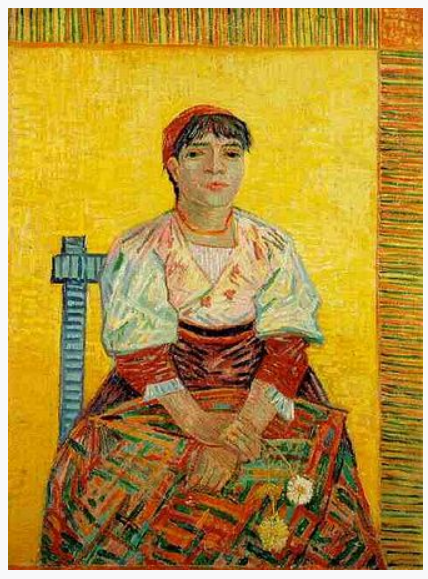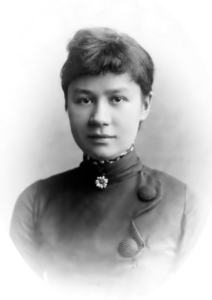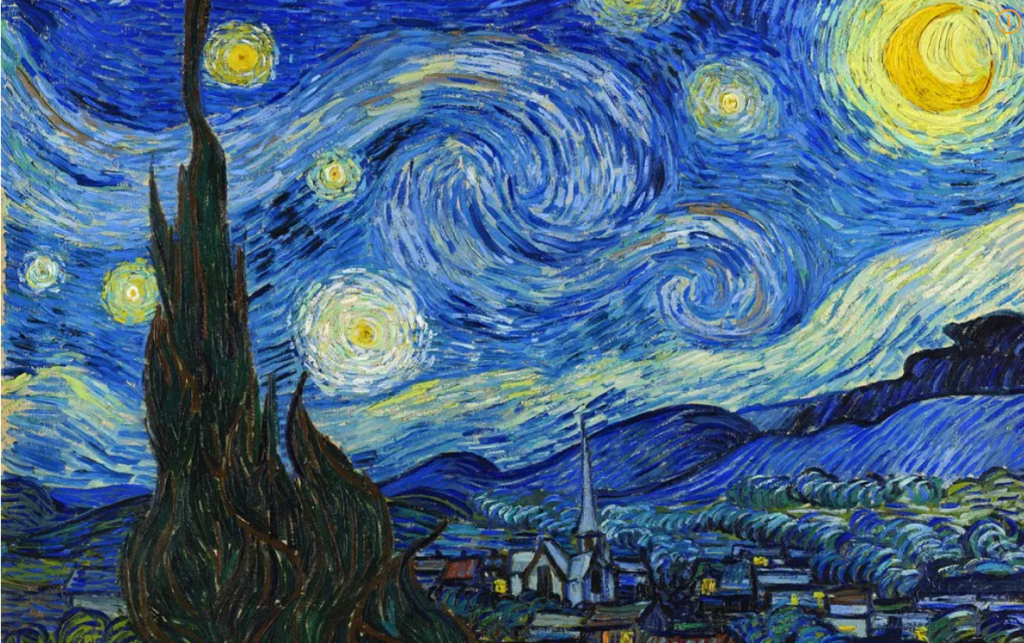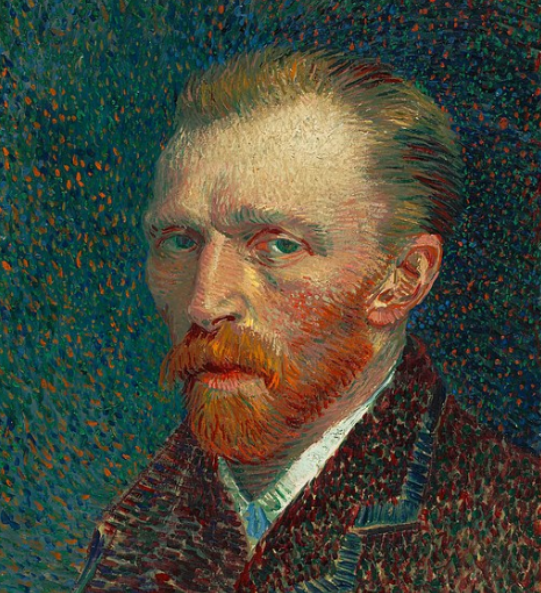Vincent Willem van Gogh (1853.3.30 – 1890. 7.29) was a Dutch post-impressionist painter, one of the most famous and influential figures in the history of Western art.
Who was the lover he loved? It is widely known that no woman was in love with him because of his eccentric personality and the painful spiritual world he followed throughout his life, but he also had a woman he loved.
When Vincent was 17, his uncle hired him at the Goupil & Cie gallery in The Hague. In 1873, at the age of 20, he moved to the London branch of the Goupil & Cie.
Vincent felt a sense of accomplishment at work at this time, to the extent that he was earning more money than his father. Having matured beyond adulthood, Vincent fell in love with Eugénie Loyer, the daughter of the landlord who was boarding.
However, Eugenie Royer refused Vincent’s confession because he had already secretly engaged to a former lodger.
Vincent, shocked by the rejection, locked himself in his world alone and began to become immersed in religion. From this point on, his own painful spiritual world came out in earnest.
There was a woman after Eugenie Royer who was Agostina Segatori, a famous model and cafe owner.
Of course they are not married and Gogh spends his whole life without getting married.
Over the years, there is a woman who managed and published Gogh’s works and letters after he committed suicide with a pistol. She is Joanna Bonger, wife of Van Gogh’s younger brother Theo.
It is all thanks to her that she can fully treat Gogh’s works and letters in modern times, even after his death.
1. Agostina Segatori, Van Gogh’s Lover
Agostina Segatori (1841-1910) was born in Ancona, Italy.
Agostina was a famous model. She was also modeled by painter Jean-Baptiste-Camille Corot.
Until her relationship with the Parisian painter Edward Dantan in 1884, nothing was known about her life, and when she met Van Gogh, she ran a cafe named Café Tambourin in Paris.

Vincent was looking for a place to display his work while working in Paris, and it was finally Café Tambourin in Agostina that found a place to display his work to a wider audience.
Tamburin Cafe was a popular destination for artists, writers, and critics, and its walls were decorated with artwork by frequent artists. Vincent became a regular at the cafe after holding exhibitions at the cafe.
Agostina became rather famous in the spring of 1887 due to her relationship with Vincent van Gogh, who lived in Paris from 1886 to 1888.
Vincent lived with his brothers during this time, so there is little information about his relationship with her.
However, information about their relationship at the time has no choice but to follow one of Vincent’s best friends, the painters Emile and Paul Gauguin, who, according to their claim, loved Agostina a lot.
Agostina inspired Vincent, the artist, to paint, and Vincent drew two portraits modeled on Agostina.
One is “a woman with a tambourine” and the other is “an Italian woman.“

Agostina was a progressive and modern woman in her time. By earning money from running a cafe and growing financially, she had a strong sense of independence, and provided a place for artists to exhibit their most important works at the time.
Among them, the two briefly dated after providing a place to Vincent van Gogh, and the relationship developed rapidly.
Vincent’s portrait of Agostina shows the life of Agostina.
Agostina is sitting on a chair at a table shaped like a tambourine. The fact that a beer glass is on the table and the plates under the glass indicate that she enjoys drinking, and that she is a woman who smokes because she has a cigarette in her hand.

Unlike now, at the time, women’s drinking and smoking were considered uncommon and inappropriate because they were regarded as being done by artists and prostitutes.
As shown in the painting, Agostina was a woman with an open personality, not the kind of woman that was universally seen in that era.
This Agostina’s character is a short-lived meeting with Vincent, but it served as a decisive cause for breaking up with conservative Vincent.
Unfortunately, due to these differences in perception, the two fell out and separated in July 1887. It was a short meeting in less than a year.
Since then, Agostina’s financial condition has become difficult, leading to the bankruptcy of the cafe.
At this time, Vincent wanted his paintings stored in the cafe back, but Agostina had already sold them, including Vincent’s paintings, and when Vincent did not get them back, he was greatly disappointed in Agostina.
Agostina Segatori, a short-lived encounter for Vincent but the only woman, died in Paris in 1910 after several setbacks, including the bankruptcy of Caffèle Tambourine.
On the other hand, Vincent dreamed of building a new art village that fall, when he separated from Agostina, and began living with Paul Gauguin, but due to the wide difference in personality, he often argued and was not smooth.
In December, Vincent suffered a psychotic attack and, after arguing with Gauguin, inflicted a shocking self-harm that cut off his ear with a razor.
He even surprised the prostitute by handing him a piece of his left ear to a prostitute in a brothel.
Upon receiving a report from a prostitute, the police transported Gogh to a psychiatric hospital in Saint-Remy for treatment.
He settled in Auber, near Paris, in the spring of 1890, and once seemed to be recovering from the anxiety of a seizure, including painting, but on 27 July 1890, he suffered another mental illness and eventually attempted suicide with a pistol, only to die two days later on 29 July 1890.
Some raise questions and claim the theory of murder, but the evidence is poor.
2. Vincent Van Gogh’s Woman, Joanna Bonger
Johana Van-Goh Bonger (1862–1925) was born in Amsterdam, and shortly after Vincent’s death, Vincent’s brother Theo also died.
It was two years after Joanna married Theo (1889.4.17).
She suddenly had to support herself and her son. She had hundreds of paintings left by her son, who was less than a year old, and by the artist Vincent van Gogh.
Johanna was an English teacher in high school before meeting Theo, and was a financial resource who could speak French and Dutch.

She sold Vincent’s paintings and began to let people know that Vincent’s paintings were wonderful.
He introduced Vincent’s work to people in the art world who were close to Theo, and eventually succeeded in exhibiting Vincent’s paintings in a large gallery in the Netherlands in 1892.
In 1905, the 15th anniversary of Vincent’s death, a large-scale retrospective exhibition was held at the Sledelik Museum, displaying as many as 484 works.
This retrospective was visited by many critics from all over Europe, and Gogh became a master painter. It is said that the price of Vincent’s work has increased by two to three times since this retrospective was held.
In 1914, she published a collection of letters from Vincent to Theo. Now everyone can read about Vincent’s thoughts, Vincent’s dreams.
As a result, more people began to appreciate Vincent van Gogh’s works, and when she died in 1925, Vincent’s works became world-famous.
3. Mother of Vincent Van Gogh
Vincent’s mother was Anna Cornelia van Gogh-Carbentus (1819-1907). Vincent’s mother came from a wealthy family in The Hague, and was a religious woman who always emphasized the importance of family around her.
Vincent’s father received a small salary because he was a minister, but the church he took over provided the family with a house, maid, cook, gardener, wagon, horse.
These relatively abundant living conditions allowed Vincent’s mother to afford a quality education for her children. She encouraged and educated her children to sing, make crafts, and read many books.
Vincent was interested in painting from an early age, and received his first painting class at home from his mother. Discovering his qualities as a painter, his mother encouraged Vincent to paint, which led him to start painting.
Although Vincent’s early paintings do not come close to those of later generations, they are evaluated as expressive, and it can be said that Vincent laid the foundation for painting.
However, as Vincent grows older, he gets a job in a gallery, and Vincent falls for the wrong women.
In other words, Vincent fell in love with his landlord’s daughter, his paternal nephew, and a former prostitute. Still, Vincent’s mother never gave up on him and cared for him.
In 1884, when Vincent was 21 years old and his mother was in bed with a broken leg, he painted a church in the village to cheer up his mother.
After moving to France, Vincent frequently sent letters to his mother to ease her concerns about her children, and in 1889, he mailed her several paintings and artworks, but unfortunately, Vincent and his mother never met each other again.

This is because Vincent ended his life by suicide before his mother visited.
Vincent’s mother, Ana Cornelia Garventus, sponsored and cared for Vincent from an early age, but Vincent ended her life as a suicide, leaving a deep scar in her heart.






